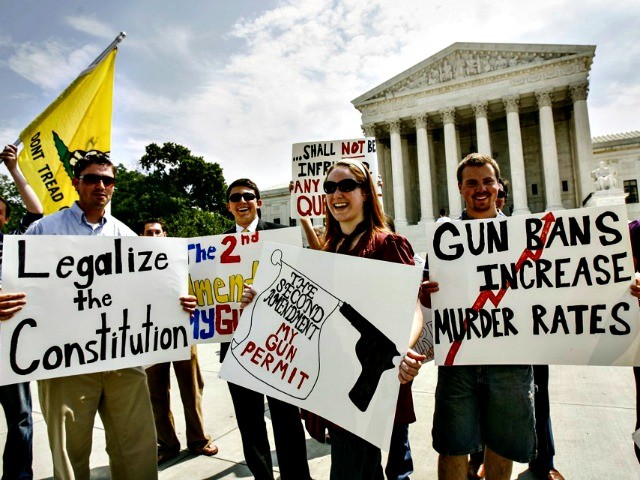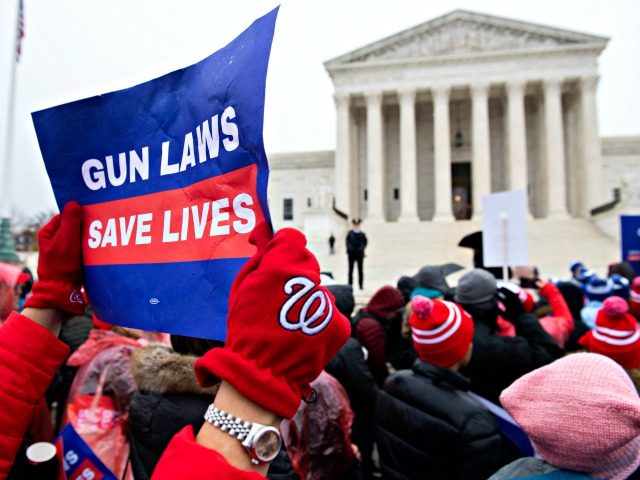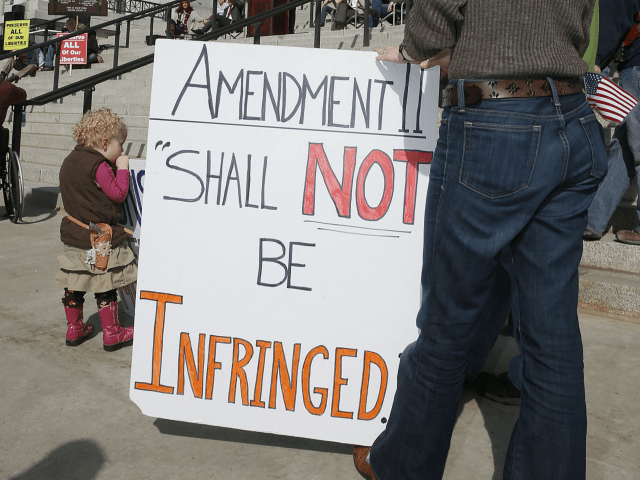Anti-gun lawyers are both clever and relentless. That’s a key point to understand as the Supreme Court takes up a major Second Amendment case, New York State Rifle & Pistol Association v. Bruen.
In earlier posts (here and here), I showed why the State of New York has a weak case for restricting the right to carry guns outside the home. According to the clear standard the Supreme Court has set, New York’s gun law should not be declared constitutional. That standard, established in District of Columbia v. Heller, holds that the constitutionality of gun laws turns on the text, history, and tradition of the Second Amendment and gun rights during America’s founding.
So, it’s no surprise that New York’s lawyers are pushing the Court to change the standard. They insist that an interest in promoting public safety justifies the state’s restrictive public-carry law. This approach allows them to paint a picture of “blood running in the streets” if the Court lifts New York’s restriction.
But that picture is completely misleading. Even if, suddenly, everyone agreed to accept concerns for public safety as a standard for reviewing New York’s gun law, New York’s defense should fail.

In this June 26, 2008 file photo, pro-rights gun supporters hold up banners outside the Supreme Court in Washington after the court ruled that Americans have a constitutional right to keep guns in their homes for self-defense. (AP Photo/Jose Luis Magana, File)
The truth is that the best way to protect public safety is to ensure robust public-carry laws. Why? Well, it comes down to the old saying “When guns are outlawed, only outlaws will have guns.”
This was a bit of wisdom America’s Founders understood. One thinker who deeply influenced them was the eighteenth-century Italian criminologist Cesare Beccaria. In a passage that Thomas Jefferson copied into his personal “Legal Commonplace Book,” Beccaria said that laws which forbid the wearing of arms end up disarming only those “who are not disposed to commit the crime which the laws mean to prevent.” Restrictive gun laws, Beccaria added, don’t prevent murder but rather encourage it, “as it requires less courage to attack unarmed than armed persons.” He likened banning guns to depriving people of fire “for fear of their being burnt” or of water “for fear of their being drowned.”
Consider what will happen if the Supreme Court strikes down New York’s restriction on public carry. Who will end up securing carry licenses? Law-abiding citizens. Even if New York lifts its restriction, applicants for licenses to carry would presumably still need to satisfy eligibility requirements such as confirming that they are not felons, they are not mentally ill, and that they do not use illegal drugs. A copy of the current carry application is here.
New York’s lawyers ought to be aware of the data showing that concealed-carry license holders are extremely unlikely to commit crimes. Data from the Crime Prevention Research Center (CPRC), for example, indicates that while police commit firearms violations at a rate of 16.5 per 100,000 officers, the rate for permit holders in Florida and Texas is just 1.4 per 100,000, with similar data in other states. Regardless of the precise comparison with the police, permit revocation statistics make clear that carry license holders are overwhelmingly law-abiding.
Police officers generally are entitled to carry concealed firearms in every state in the nation under the federal Law Enforcement Officer Safety Act. Law-abiding citizens—who, after all, are their own first responders (see my video here)—should have the same right.
Shortly after the Supreme Court’s Heller ruling, researchers sympathetic to gun control looked at the data and concluded that permit holders posed a low risk of misusing guns. As a result, the researchers said they expected “relatively little public safety impact” from Heller if public carry became more widespread.
Crime data have borne out this prediction. Over the past two decades, the number of permit holders has grown exponentially while the violent crime rate has dropped. As recounted in an amicus brief filed by law enforcement groups and others in Bruen, the number of concealed-carry permit holders increased from 2.7 million in 1999 to 19.48 million in 2019. And that figure actually underestimates the increase, as 21 states now allow permitless concealed carry, up from 1 state (Vermont) in 1999.
But during the same period, the violent crime rate dropped by more than a quarter. The FBI reports a violent crime rate of 523 per 100,000 inhabitants in 1999; by 2020, that number had fallen to 380.8.
Although licensed firearm carriers rarely commit crimes, thousands of gun owners use guns for self-defense every day. That is according to a new, comprehensive survey conducted by Georgetown political economist Dr. William English. English surveyed thousands of gun owners, and he found that nearly one-third of them have used a firearm to defend themselves or their property. That works out to approximately 25.3 million American gun owners who have used a firearm to defend against crime—meaning there are approximately 1.67 million cases of armed self-defense every year, or 4,575 every day.
To be clear, in the vast majority of these defensive gun uses, merely brandishing or referring to a gun was enough to defuse the threat; only 18.1 percent of them involved actually firing a shot. (For more on the English survey and the millions of Americans who have used firearms for self-defense, see my video.)
And if allowing private citizens to carry firearms in public is such a threat to public safety, why have so many states made their carry laws less restrictive? Since the 1980s, dozens of states have gone from “no-issue” or “may-issue” laws to “shall-issue,” meaning applicants don’t need to show good cause to receive a license. During that time, not a single state has gone in the other direction. And 19 of the 21 states to adopt permit-less carry, or “constitutional carry,” have done so since 2010. (See p.5 of the amicus brief filed by the National Shooting Sports Foundation.)
New York, with its restrictive may-issue law, is clearly on the wrong side of history.
But don’t expect to hear any of this evidence from anti-gun lawyers in the Supreme Court’s upcoming Bruen case. They’ll trot out other arguments to try to show that public carry threatens public safety. But that evidence is weak, too, as I’ll reveal tomorrow.
* Attorney Mark W. Smith is a Presidential Scholar and Senior Fellow in Law and Public Policy at The King’s College, a New York Times bestselling author, and the Host and Producer of The Four Boxes Diner on YouTube, a channel providing in-depth analysis on Second Amendment scholarship, legal matters, news, and issues.


COMMENTS
Please let us know if you're having issues with commenting.